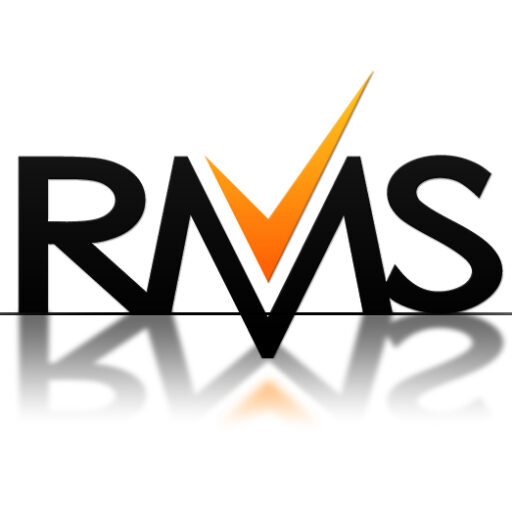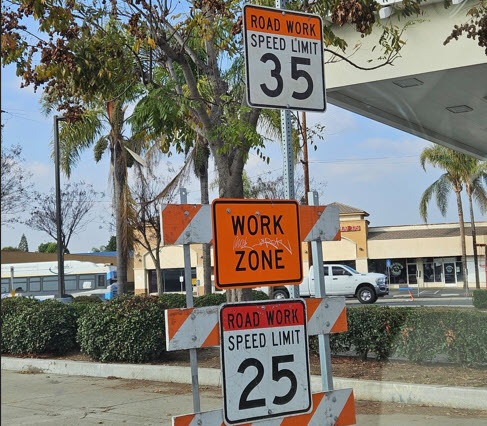As we get accustomed to the idea of a hybrid workforce, I’m reminded that a hybrid approach to third party auditing can also be appropriate, allowing organizations to maintain effective oversight while optimizing time, resources and the depth of inspection based on the vendor’s risk level and function.
While consistency and objectivity are of utmost important, the hybrid approach can be more adaptable to various risks and business needs. Creating a flexible framework, maximizing the benefits of a remote review and onsite audit can leverage the strength of both methods. For example, conducting remote call reviews can provide both more frequent touchpoints and quickly identify areas of concern or miscommunication. No one wants to wait until an annual review to find out that key communication points were missed, or the vendor performance/compliance or security could be a problem.
Using Operational and Compliance Call Monitoring in Your Audit Toolkit
My preference is to include Operational Call Reviews as part of an audit/oversight process – and that is easily done remotely. I always wondered why QA departments monitoring calls could miss some of the factors that I think are critical. However, I realized there is a difference between a typical QA call monitoring, and a more operational Compliance and Effectiveness Call Monitoring. Often, QA reviews work off a checklist of verifying the consumer, Mini-Miranda, and tone/language. I’ve actually seen high QA scores on an internally rate QA call, but the write-up missed the fact that it was actually called outside of appropriate hours. And I’ve seen examples where a collector did well on the official checklist – but never asked for the money. Now, I’m all about compliance, and doing things right – that’s definitely first, but I also want to see effective collectors, who are able to understand the consumer’s situation and provide the right solutions at the right time, and collect money.
In a hybrid oversight framework, be sure to include regularly scheduled call reviews. These enhanced call reviews, incorporating compliance and operational techniques, actually provide a quick look at many potential risk areas, such as collector training and skill level, knowledge of client and special requirements, compliance with laws/regulations and consumer treatment. You’ll need access to the recorded call as well as account information to verify accurate post-call documentation. Requesting calls can shed light on call retention, complaint recognition, dispute resolution, payment practices, privacy as well as documentation of cease and desist requests and bad numbers. It’s not a QA call monitoring, but effectively, it’s a mini-audit. You’d be surprised how many issues are identified even with a small sampling of calls.
A very important part of this process is the call calibration with the vendor. Picking a call or two and reviewing your ratings and interpretations with the agency or vendor can be a huge win for both parties. I have been surprised on calibrations when one party thinks the call went exceptionally well, while the other rated it a fail. It’s important to listen and share ideas, thoughts and scoring to be sure you are calibrated with your vendor. It leads to better communications and overall results.
The operational call monitoring program can be very cost-effective, and appropriate for low-risk vendors. It can also help identify when a more in-depth analysis would be appropriate. For higher-risk vendors, it might be just one tool in the audit toolkit. It’s a great first step.
Remote with Periodic Onsite Visits
Over the last few years, we have all discovered that many things can be done remotely. In fact, for many years, we have conducted a variety of our onsite audit work prior to the audit, and then reinforcing the information with the site visit. For example, policies and procedures can be analyzed prior to travel. Upon arrival onsite, the auditor can verify that what was written is actually the practice.
Video calls, document sharing and system access can give us a head start that is typically less resource-intensive and can be scheduled in segments. The onsite however, provides an opportunity to inspect physical security, observe operational processes first hand, and conduct in-person interviews. Generally, an onsite visit allows for a deeper, firsthand experience that is more difficult to accomplish with a remote review.
Hybrid audits allow organizations to conduct more frequent checks on vendors without incurring the costs associated with regular onsite visits. By conducting most of the routine work remotely and reserving onsite visits for key or high-risk vendors, organizations can scale their oversight program effectively.
Benefits of the Onsite Audit
Onsite audits for third-party collection vendors offer several distinct benefits that provide deeper insights into vendor operations, security, and overall compliance. Here are some key advantages:
- Direct Observation of Operations – Onsite audits allow auditors to observe the vendor’s daily operations and practices firsthand. This visibility makes it easier to verify that policies and procedures are being followed consistently, rather than relying solely on documentation or self-reported compliance.
- Physical Security Assessment – An onsite audit enables auditors to assess physical security controls, such as restricted access areas, data storage facilities, and document disposal practices. This is critical for vendors handling sensitive customer information, as it ensures that physical safeguards are in place and effective.
- In-Person Interaction with Staff – Onsite visits facilitate direct engagement with the vendor’s employees and management. Auditors can conduct in-depth interviews, assess staff understanding of protocols, and gauge the organizational culture, which is often challenging to evaluate remotely.
- Better Insight into Organizational Culture – Observing the workplace environment and culture in person can help auditors determine how seriously the vendor takes compliance, customer service, and risk management. A culture of transparency and accountability is essential for ethical and compliant debt collection practices.
- Improved Relationship-Building – Face-to-face interactions foster stronger relationships between the organization and the vendor. This can lead to better communication, increased cooperation, and an open exchange of ideas for process improvements.
- Identification of Informal Practices – In-person audits often reveal informal practices or “workarounds” that staff may use, which might not be documented. These practices could introduce risks or compliance issues that may not surface in a remote audit.
- Real-Time Verification of Processes – Onsite auditors can verify key processes in real-time, such as call handling, payment processing, and customer interactions. Observing these processes live provides immediate insights into procedural compliance and effectiveness.
- Opportunity for Hands-On Testing – Auditors can perform hands-on testing of equipment, security controls, and other operational safeguards during an onsite audit. For example, they can inspect server rooms, test access controls, and check the functionality of alarm systems or shredders, ensuring that physical and technical safeguards are functioning as intended.
Onsite audits provide a level of depth and clarity that are much more difficult for a remote audit to match. They allow organizations to gain an unfiltered view of vendor operations, build stronger relationships, and verify compliance controls directly. While they require more resources, the benefits of onsite audits for high-risk or critical vendors can make them a valuable component of a comprehensive vendor oversight program.
Benefits of the Remote Audit
So, with all the advantages of an onsite audit of your third-party vendor, why consider remote? For a variety of reasons. Remote audits provide several practical and financial benefits, especially in today’s increasingly digital environment. Remote audits offer a flexible, efficient way to maintain regular oversight without the logistical constraints of travel. Here are the main benefits:
- Cost Savings – Remote audits eliminate travel-related expenses, such as flights, accommodation, and meals. This makes them a cost-effective option, especially for companies overseeing vendors in multiple or distant locations.
- Increased Frequency of Audits – Because remote audits are generally less resource-intensive, organizations can conduct them more frequently, allowing for ongoing monitoring and quicker identification of compliance issues.
- Greater Flexibility and Convenience – Remote audits allow for more flexible scheduling since auditors and vendor staff can join from their respective locations. This is particularly helpful for companies with limited resources or vendors operating in different time zones.
- Reduced Operational Disruption – Onsite audits can disrupt the vendor’s workflow as they often require significant preparation and accommodate visiting auditors. Remote audits are often less intrusive, enabling vendors to carry on with their daily operations with minimal impact.
- Use of Advanced Technology and Real-Time Data Sharing – Remote audits rely on secure platforms for data sharing, virtual meetings, and document access. These technologies streamline the audit process, allowing auditors to access real-time data, review digital records, and screen-share to perform assessments effectively.
- Enhanced Document and System Access – Remote audits often facilitate direct system access for auditors, allowing them to check records, compliance documentation, and training records quickly. In some cases, this can lead to faster and more comprehensive document reviews.
- Ability to Conduct Follow-Ups Efficiently – For routine follow-up audits or corrective action reviews, remote audits allow organizations to quickly verify whether the vendor has implemented necessary changes or addressed past issues without waiting for the next scheduled onsite audit.
Get The Best of Both Worlds
While understanding that remote and onsite audits each have advantages, we could also talk about the disadvantages of each. But rather than rely on one or the other – I like the concept and adaptability of a hybrid approach to auditing. The hybrid approach can create a more flexible framework that leverages the strengths of both types of auditing.
I want to be onsite to see financial, mail opening and payment handling as well as understand physical security. But I don’t want to be on the road 24/7 either.
With the logistics of travel and scheduling, it’s often more practical to start with remote reviews, and plan the onsite time to enhance and verify the remote work and complete a fuller picture of the whole environment.
With the hybrid audit framework, I would start with a call monitoring component, as it can quickly highlight the agencies’ strengths and weaknesses in key categories – interaction with the consumer and compliance. From there, I’d be flexible in my next steps – whether it be a more robust call review, or a quicker trip to the vendor.
The hybrid approach – maximizing the strengths of the remote and onsite methods – it’s the best of both worlds.
Author: Judy Hammond
Judy Hammond is founder and President of Resource Management Services, Inc. The corporation was founded in 1986 and specializes in auditing and consulting, serving the collection and recovery industry. As President of Resource Management Services, Inc., she has more than 35 years of experience with an emphasis on operational reviews for compliance and operational effectiveness of collection operations, both for creditors’ internal collection and recovery operations as well as collection agencies and attorneys. She has worked with top banks and financial institutions, utilities, credit unions and telcoms, (and their vendors) and has conducted many Best Practices projects. She is author of various industry publications: “Comprehensive Agency/Attorney Usage Study,” “Comprehensive Agency/ Attorney Usage Study II” and “Collect More From Collection Agencies”. Her work with creditors who were looking to sell debt for the first time, and subsequent Buyer/Seller research was the foundation for the second corporation, The Debt Marketplace, Inc. She worked with Dennis Hammond as co-founders of the Debt Buyers’ Association, (now RMAi), building the foundations for industry standards, as well as the original code of ethics. She developed and produced two industry conferences, Collection and Recovery Solutions and Debt Connection Symposium & Expo, from their inception in 2002 and 2006, respectively, to 2022. Prior to starting her own company, she worked with two large collection agencies.
Note: Resource Management Services, Inc. provides Third Party Auditing/Oversight services for Creditors. For more information, contact me at judy.hammond@resourcemanagement.com or check us out at ResourceManagement.com

Sign Up for the Twice Monthly Newsletter
Just enter your email address at the top orange bar at:
Collection Compliance Experts – “The Power of Expertise: Oversight Perfected”
It’s that easy! Twice a month – we provide blog updates and Resources for the Collection and Industry Professional.
Your email is just for this newsletter. We never sell your information. No fee. Opt-out at any time.




